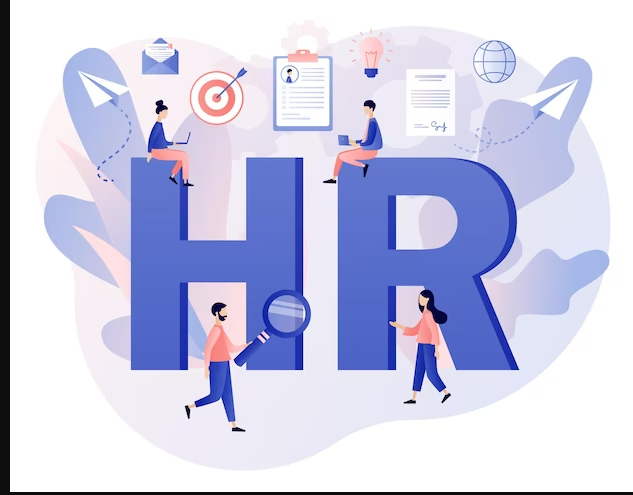With most organizations welcoming the year 2024 with open arms, HR teams have also started to gear up for the upcoming session. From charting plans for the forthcoming year to setting priorities, the top-level managerial department of human resources is geared to grow more. But what is in store for human resources for 2024? What are the top HR trends that need to be followed? Do the best PEO providers follow them? We have all the information collected over here.
Top HR Trends of 2024
Let’s dive into it and explore all the details in depth:
Embracing Generative AI for Leadership Enhancement:
These days businesses are witnessing transformative shifts driven by technology and evolving workforce dynamics. Generative AI revolutionizes leadership, fostering engagement and organizational success. Hybrid work models are embraced for enhanced productivity and flexibility. Intelligent talent acquisition strategies leverage predictive analytics for efficient recruitment. Additionally, holistic wellness programs and pay transparency initiatives prioritize employee well-being and growth.
Harnessing the Power of Hybrid Work Environments:
Hybrid work environments, blending remote and in-office work, are here to stay, offering employers opportunities to boost productivity, flexibility, and satisfaction. This is done all while optimizing efficiency, redefining performance metrics, and building a culture of trust, collaboration, and inclusion for innovation, talent retention, and business resilience.
Smarter Talent Acquisition Strategies:
To stay ahead in the fight for top talent, organizations are turning to innovative strategies this year. Predictive analytics, AI recruitment platforms, and gamified assessments will streamline hiring, identify high-potential candidates, and reduce bias. At the same time, data-driven insights will optimize marketing, employer branding, and candidate experience, creating a seamless journey and securing the best-fit talent for their evolving needs.
Cultivating Holistic Wellness Programs:
Employee well-being is a top priority in HR trends for 2024, focusing on holistic programs covering physical, mental, and emotional health. Employers will offer comprehensive initiatives, including mindfulness, resilience training, and financial wellness resources. Thus, by fostering a supportive work environment with work-life balance and open dialogue on mental health is crucial. Prioritizing holistic wellness cultivates resilient, motivated employees, driving engagement and productivity.
Curating Commute-Worthy Experiences:
This year, as remote work blurs the lines between personal and professional life, employers are rethinking how they engage employees. They focus on creating enjoyable experiences, like personalized commuting perks and virtual team activities. Therefore, by emphasizing these experiences, companies can make their distributed workforce feel more connected and valued, leading to better retention and loyalty in the long run.
Promoting Greater Pay Transparency:
Employers are increasingly prioritizing greater pay transparency to foster trust, equity, and employee engagement. This involves openly discussing pay ranges, salary benchmarks, and performance-based incentives. Thereby, employers understand the importance of articulating clear criteria for salary decisions and enabling employees to understand how their compensation aligns with market standards.
Upskilling and Reskilling the Workforce:
As technology continues to reshape job roles, upskilling and reskilling initiatives are becoming increasingly important for organizations. Therefore, employers are investing in tailored learning programs such as online courses, certifications, and mentorship to prepare their workforce for the demands of the digital age. Organizations empower employees to embrace change and drive sustainable business growth in a dynamic landscape by fostering a culture of innovation.
Tapping into the Hidden Workforce:
Human resource departments are worldwide focusing on tapping into the hidden workforce, including remote workers, gig economy workers, and freelancers. This trend involves implementing strategies to recruit, manage, and retain these non-traditional workers effectively. Therefore, by embracing this hidden workforce, organizations can access a diverse talent pool, enhance agility, and drive innovation.
Silos to Solution:
Prioritizing the breakdown of organizational silos to foster collaboration, innovation, and agility will on the top in the HR trend list. It involves implementing integrated HR solutions that connect different departments and functions, breaking down communication and information-sharing barriers. Therefore, by promoting a culture of cross-functional collaboration and knowledge exchange, organizations can enhance decision-making, accelerate problem-solving, and drive overall business success.
Conclusion
In 2024, PEOs will be pivotal in aiding businesses to adapt and thrive. They leverage AI for leadership enhancement and streamline talent acquisition in hybrid work setups. Best PEO providers also implement wellness programs and promote pay transparency and reskilling initiatives. By partnering with PEOs, businesses access expertise and technology to navigate HR trends, drive success, and sustain growth in competitive markets.
FAQs
Do the best PEO providers follow HR trends?
Yes, best PEO providers closely monitor HR trends to offer innovative solutions. By staying informed, they adapt to changes like remote work policies, diversity initiatives, and HR technology advancements, ensuring they meet clients’ evolving needs.
Do HR trends have any importance?
HR trends are important as they provide insights into emerging practices, technologies, and strategies to help HR departments stay competitive and effectively manage their workforce.
What should HR focus on in 2024?
In 2024, HR should focus on enhancing employee experience, fostering diversity and inclusion, upskilling and reskilling initiatives, leveraging data analytics for decision-making, and adapting to remote and hybrid work environments. In addition to this, HR should prioritize employee well-being and mental health support.
